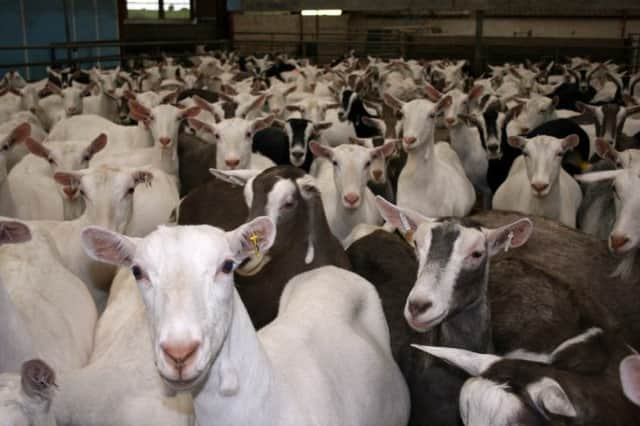Goats help make milk production pay


Neil Bellerby farms at Ox Close Farm, West Rounton, near Northallerton with his wife Michelle, daughter Kirsty and son Robert. But it was because his two children both wanted to get involved in the farm business that he decided to set up the goat herd.
The family’s Holstein herd, with an average yield of 10,500 litres, was under consideration for expansion as a means of increasing the income to support what is likely to be three family units in the future. But a new venture, albeit still involved in producing milk, was the chosen option.
Advertisement
Hide AdAdvertisement
Hide AdNow the family’s milking goats are a well-established part of the business. Despite the high herd average the cows are still grazed during the summer.
“Our milk production is very much about producing as much as we can from grass and forage,” says Neil.
Calving is all year round but concentrated during the summer. The highest yielding cows are giving over 15,000 litres and 10 cows currently in the Belaw herd have achieved a lifetime yield of over 80 tonnes.
The goat herd, established in 2007, consists of British Saanens, Toggenburgs and British Alpines, and the average yield per goat a year is around 1,100 litres. It is now run by daughter Kirsty. In total, it produces more than one million litres of milk a year and it is sold to the East Riding based goat milk company St Helens Farm.
Advertisement
Hide AdAdvertisement
Hide Ad“When we set up the goat business there were all sorts of issues associated with expanding the dairy herd such as milk quota, milk price and slurry disposal. A goat herd meant we could produce more milk from the farm without buying more land.
“We spent a year researching goat farming and looking at other units before we made the final decision,” says Neil.
“Some goats can milk for two or three years without kidding but they have their own particular management issues compared to cows, they are more difficult to achieve a year-round kidding and their feet need trimming regularly.”
The milk production of each individual goat is recorded so that the Bellerbys can identify superior performers. Retaining females as replacements from the best milkers maintains good levels of production.
Advertisement
Hide AdAdvertisement
Hide AdGoats are natural springtime kidders but because a higher price is paid for goat’s milk in the winter, a system of extending daylight hours is used to induce oestrus. It means more females kid down in the autumn and increase winter milk production.
“There’s a lot bigger difference in the seasonality payments for goat’s milk than there is for cow’s milk,” says Neil.
Foot rot can be a problem for goat keepers. To minimise the risk of the herd to the condition the Bellerbys keep the goats’ feet as dry as possible.
“They are housed in straw yards and never go into damp conditions. The design of the rapid-exit milking parlour is such that it minimises any contact the goats may have with moisture.
Advertisement
Hide AdAdvertisement
Hide Ad“We use Envirosystems Envirobed bedding in the collecting yard to keep everything as dry as possible.
“When we visited France to look at goat milking systems we saw that every effort is made to keep goats dry at all stages of milking and we decided to follow the same system.
“The Envirobed is an important part of that. It keeps the collecting yard area really dry and even if goats lie down the bedding makes sure there’s no moisture about on the floor.”
Envirobed is also used in the cow cubicles. Beds are renewed every three days during the winter and after milking they are scraped off at the back and fresh Envirobed dragged from the front of the bed to replenish it.
Neil adds: “We want to create the same dry and comfortable environment for both the cows and the goats so that we benefit from a high standard of welfare and animal health across both systems.”